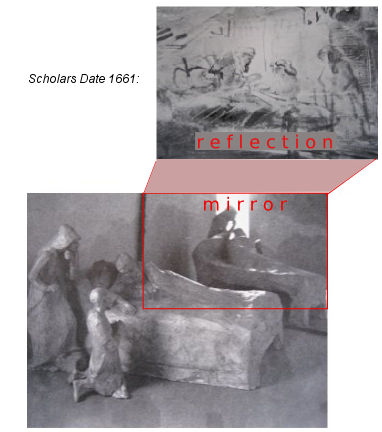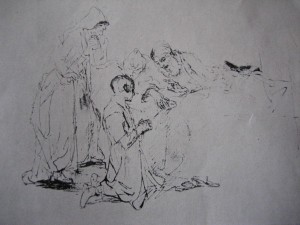This blog makes a case for starting again with the neglected art of observation, particularly the art of observing human nature. Humanism: how the spirit of Man expresses itself in the physical world. Humanity is the most interesting subject because it concerns us most deeply. It was the prime subject of art for the 40,000 years prior to this passed century. The subject never pales because life moves on and art changes with it.
Unfortunately the writers on art are somewhat outclassed by the artists themselves when it comes to observing. Some artists have spent their lives studying it. The critics protect their self esteem by avoiding this subject matter and concentrating on abstract ideas, where they feel safer.
After 100 years of this bias in public notice it is little wonder that observed art, the art that Everyman can understand, is in steep decline. Through habit we try to take seriously establishment art (Art Bollocks as it is so justly dubbed by the Jackdaw Magazine) but the effort is seldom worth making. Their art is only of interest to the few who are making money out of it. Art matters because seeing and responding to the world about us is essential to our very survival and art is our best educator in this.
Rembrandt scholarship is used as a demonstration of how far the rot has gone. The scholars seem completely out of touch with human feeling. Having spent their lives in company with the greatest artist to observe humanity, they have so undermined his reputation that students can no longer trust him. Observing the results, they must represent the steepest artistic decline in human history. It is no coincidence that the decline dates from the rise of Art History as a political power. Artists have been too lazy or naïve to direct their own evolution. They have left it to the likes of Serota at the Tate and the Rembrandt scholars.
It is going to be very difficult to stop them but that is what must happen. The Jackdaw and the Stuckists have unearthed sufficient evidence to put many of them “away”. This is well worth considering as a tactic. I have shown that the Rembrandt scholars are simply protecting themselves, their tactics of head-in-sand have worked but done immense damage to the cause of art as a result.
In a nut-shell – my article “Rembrandt’s Use of Models and Mirrors” published in the Burlington Magazine (Feb.1977) demonstrated that the hypothetical development of Rembrandt’s style created by generations of Rembrandt scholars, was no longer tenable. The variations in style were due to Rembrandt’s responses to the very different stimuli of reality or the reflection of that reality in a dim polished metal reflector (glass of the necessary size did not exist in Rembrandt’s day). Below I show three illustrations from that article to clarify this point. Many more examples are available (link to www.saveRembrandt.co.uk)
Take this link to see a 5 minute film which shows the same use of mirrors with two of Rembrandt’s paintings: “The Adoration of the Shepherds” in London and in Munich. The London one (observed in a mirror) has been discredited by the “experts” of the Rembrandt Research Project though it passed all tests that The National Gallery put it through. It probably now resides in the basement there.
The briefest perusal of the three catalogues put out by the three main collections of his drawings (The British Museum, The Rijksmuseum and the Boymans of Rotterdam) show that the “experts” are still spending all their time pretending to put dates on drawing according to style – making no attempt whatever to look at the human aspect which was Rembrandt’s chief concern. Their lack of aesthetic discernment pales into insignificance beside their lack of ordinary common sense. Either the authors are too dim for the job we entrust them with, or they badly need psychological help. The same applies to the regiments of Rembrandt scholars elsewhere.
ARE THE NEW FACTS ABOUT REMBRANDT EVER DISCUSSED? IF SO
HOW ARE THEY COUNTERED? WE WOULD LIKE TO HEAR..
 The photo is of a maquette to represent Rembrandt's studio set up with live models and a mirror for his series of drawings of Isaac and Jacob. Below is a drawing that scholars have dated 1652 ( Rembrandt's classical style) and above a drawing they date 1661 (his mature style). The photo demonstrates how both were drawn from the same seat in the studio, under identical lighting conditions and very nearly the same group of models, only Rebeccah has moved. Common sense suggests they were drawn one after the other- not after a gap of 9 years. Clearly the style of the two drawings is very different but the difference can be very well explained by Rembrandt's differing response to reality (below) and reflection in a dim mirror (above). This same difference has been demonstrated many times in Rembrandt's work. eg. The Adoration of the Shepherds, The Dismissal of Hagar and this series of drawings of death bed scenes. Konstam's article “Rembrandt's Use of Models and Mirrors” was published in The Burlington Magazine in February 1977. That article invalidated stylistic criticism but the scholars continue to destroy Rembrandt and waste everybody's time with their out-dated theories.  Scholars date 1652 |
|
|